In a world where culinary innovation meets convenience, the commercial sandwich press has quietly become a staple in the kitchen industry. Its ability to craft mouth-watering sandwiches with precision and efficiency has not only caught the attention of fast-food chains and casual dining establishments but also sparked a revolution in the way we think about quick-service meals. As these devices gain popularity, they are reshaping the landscape of the kitchen industry, promising better performance, healthier options, and a glimpse into the future of foodservice technology.
The Rise of Commercial Sandwich Presses
The commercial sandwich press has quietly but surely become a staple in the culinary world, transforming the way restaurants, cafes, and food service operations prepare their signature sandwiches. With the surge in demand for fast, convenient, and high-quality meals, these versatile appliances have surged in popularity, becoming a must-have for any establishment aiming to keep up with the quick-service market.
Once confined to the realm of casual diners and delis, the commercial sandwich press has expanded its reach to upscale eateries and gourmet cafes. Its ability to lock in flavors, achieve consistent results, and cater to a variety of menu items has made it a favorite among chefs and kitchen staff alike. The convenience it offers in terms of time and efficiency cannot be overstated, as it allows for the production of large quantities of sandwiches in a short amount of time without compromising on quality.
As the health and wellness movement continues to gain momentum, consumers are seeking healthier options that still satisfy their taste buds. This shift has prompted a surge in demand for whole-grain, vegetarian, and vegan sandwiches. The commercial sandwich press has adapted to this trend, offering a range of non-stick surfaces that can handle high-heat cooking without the need for additional fats, thus making healthier sandwiches a breeze.
The convenience of the commercial sandwich press extends beyond the kitchen. It’s a valuable tool for catering services and food trucks, where space is at a premium and speed is of the essence. These compact, portable presses can be easily transported and set up in a matter of minutes, ensuring that patrons receive their meals promptly and hot.
In recent years, technological advancements have further propelled the rise of commercial sandwich presses. The introduction of programmable settings allows for precise control over cooking temperatures and times, ensuring that every sandwich is cooked to perfection. Features like adjustable pressure and non-stick surfaces have made these appliances easier to clean and maintain, which is a crucial factor in busy kitchens.
The European market has seen a significant uptick in the use of commercial sandwich presses, particularly in countries like Germany, the UK, and France. The emphasis on quality and efficiency in European cuisine has made these presses a favorite among chefs who are always looking for ways to streamline their operations. Moreover, the rise of street food culture has opened up new avenues for sandwich presses to shine, with many street food vendors opting for these appliances to create their signature offerings.
In the United States, the commercial sandwich press has become a staple in fast-food chains and quick-service restaurants. The American consumer’s love for convenience and the demand for fast service have fueled the growth of these appliances. The versatility of the commercial sandwich press has also played a significant role in its popularity, as it can be used to prepare a wide range of items, from classic grilled cheese sandwiches to gourmet paninis.
One cannot discuss the rise of commercial sandwich presses without mentioning the role of NSF (National Sanitation Foundation) approval. This certification is a mark of quality and safety, assuring customers that the appliance meets stringent health and safety standards. NSF-approved commercial sandwich presses have become a trust symbol in the industry, giving operators peace of mind that they are providing their customers with the highest quality products.
The rise of commercial sandwich presses has also been fueled by the rise of social media and food influencers. These platforms have highlighted the art of the sandwich, showcasing the creativity and craftsmanship that goes into each creation. As a result, more and more consumers are looking for unique and high-quality sandwich experiences, driving the demand for commercial sandwich presses in both traditional and innovative culinary settings.
In conclusion, the commercial sandwich press has become an indispensable tool in the modern kitchen. Its ability to offer speed, efficiency, and quality has made it a favorite among chefs and operators worldwide. As the culinary landscape continues to evolve, it’s clear that the commercial sandwich press will remain a key player in the food service industry, providing delicious and convenient sandwiches to satisfy the growing appetites of consumers.
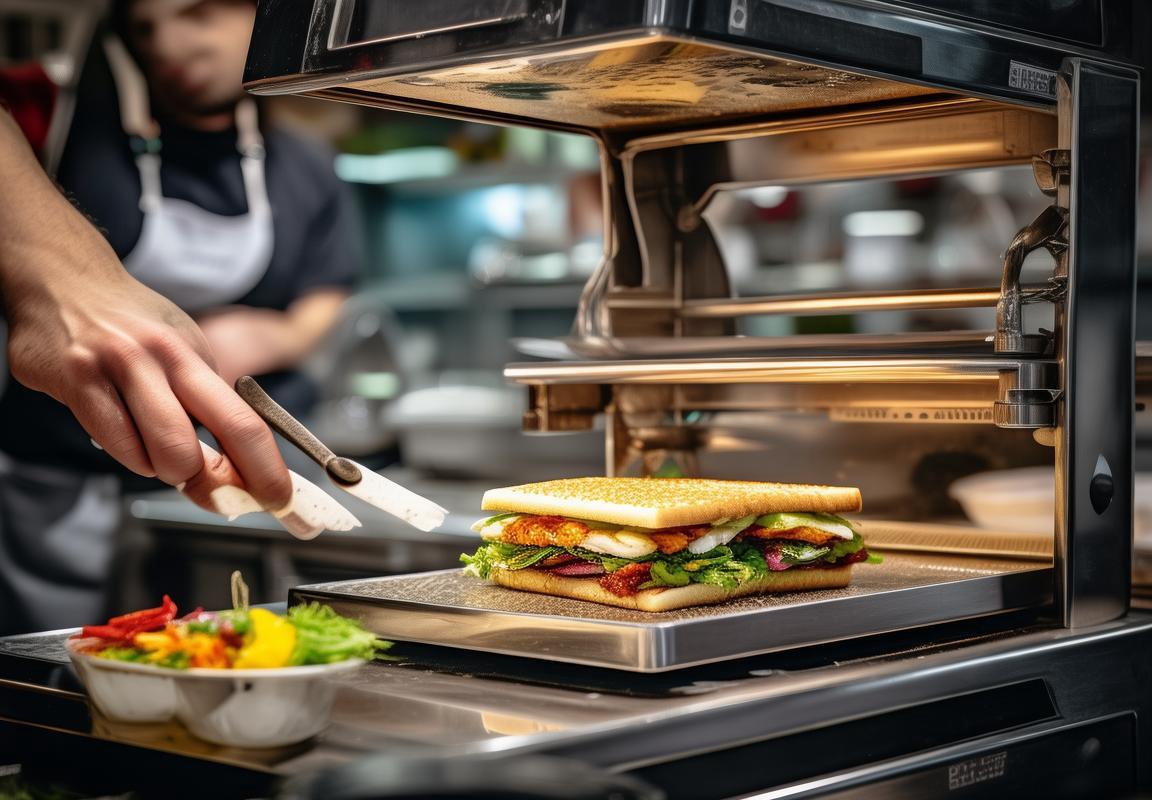
Understanding NSF Approval
NSF approval is a term that carries significant weight in the commercial kitchen industry, symbolizing a benchmark of quality and safety. It’s a mark that not only distinguishes products but also ensures they meet stringent health and safety standards. To delve into the intricacies of this certification, it’s essential to understand what it entails and how it benefits both manufacturers and consumers alike.
The NSF (National Sanitation Foundation) is an independent, not-for-profit organization that develops public health and safety standards for all consumer goods and services. Their approval process is rigorous, involving comprehensive testing, inspections, and audits to ensure that products meet these standards. For commercial sandwich presses, NSF approval is a testament to their ability to perform consistently and safely in high-pressure, fast-paced kitchen environments.
One of the primary reasons NSF approval is so highly regarded is its comprehensive nature. It covers a wide range of criteria, from material safety and construction to operational efficiency and maintenance. This means that a sandwich press with NSF certification has been evaluated on multiple levels, ensuring that it won’t pose any health risks to the users or the public.
For manufacturers, achieving NSF approval is a significant achievement. It requires a substantial investment of time and resources to meet the certification’s stringent requirements. However, the benefits are substantial. Certified products can command a premium price in the market, as they are seen as a safer and more reliable choice. This can lead to increased sales and a competitive edge over non-certified products.
From a consumer perspective, NSF approval is a crucial factor in making informed purchasing decisions. In the commercial kitchen setting, where food safety is paramount, knowing that a sandwich press has been NSF-certified provides peace of mind. It ensures that the equipment is designed to prevent cross-contamination, maintain food safety, and uphold the highest standards of hygiene.
The process of obtaining NSF approval for a commercial sandwich press is thorough. It begins with a review of the product’s design and materials. NSF experts examine the sandwich press to ensure that all components are made from safe and non-reactive materials. They also look for any potential hazards, such as sharp edges or exposed electrical parts, that could pose a risk to users.
Next, the sandwich press is subjected to a series of tests to evaluate its performance. These tests include mechanical stress tests to ensure the durability and longevity of the product. Additionally, the press is tested for its ability to evenly distribute heat, which is crucial for cooking sandwiches to a safe temperature. The goal is to ensure that the sandwich press not only meets but exceeds the industry’s safety and performance standards.
In addition to testing the physical aspects of the sandwich press, NSF also assesses the product’s user-friendliness. They look at the ease of cleaning, the accessibility of maintenance points, and the clarity of any safety warnings. A product that is easy to clean and maintain reduces the risk of bacterial growth and ensures that the sandwich press remains in optimal working condition.
Once the product passes all the necessary tests and inspections, it is awarded the NSF mark of approval. This mark serves as a symbol of trust and quality, assuring customers and regulatory bodies that the product meets the highest standards of safety and performance.
Maintaining NSF approval is an ongoing process. Regular audits and retesting are required to ensure that the sandwich press continues to meet the certification’s criteria. This commitment to ongoing quality control is a testament to the manufacturer’s dedication to safety and customer satisfaction.
In conclusion, NSF approval is not just a certification; it’s a promise of quality and safety. For commercial sandwich presses, it signifies a product that has been rigorously tested and meets the stringent standards set by the NSF. For manufacturers, it’s a mark of distinction and a signal to customers that their product is reliable and safe. For consumers, it’s the assurance that the sandwich press they choose will contribute to a safe and hygienic kitchen environment.

Key Features of NSF Approved Commercial Sandwich Presses
NSF-approved commercial sandwich presses have become a staple in the foodservice industry due to their stringent quality standards and safety certifications. These presses are not just tools for making sandwiches; they are designed with a range of features that ensure they meet the highest standards of hygiene, performance, and durability. Here’s a detailed look at some of the key features that set these sandwich presses apart:
-
Even Heat Distribution: One of the most crucial features of an NSF-approved commercial sandwich press is its ability to distribute heat evenly across the cooking surface. This ensures that each sandwich is cooked to perfection, with a crispy outer layer and a warm, moist interior. The use of high-quality materials and advanced heating elements guarantees consistent heat distribution.
-
Sturdy Construction: The build quality of these presses is exceptional. They are typically made from heavy-duty stainless steel, which not only provides a long-lasting and robust structure but also resists corrosion and maintains hygiene. The frames are designed to withstand the rigors of continuous use in a busy kitchen environment.
-
Safety Locks and Controls: Safety is paramount in commercial kitchens, and NSF-approved sandwich presses come with a range of safety features. These include lock mechanisms that prevent the press from closing when it’s not in use, ensuring operators can safely load and unload sandwiches without the risk of injury. Additionally, some models have temperature controls that can be locked in place to maintain consistent cooking temperatures.
-
Easy to Clean Design: Hygiene is a critical aspect of food safety, and these presses are designed with this in mind. The surfaces are smooth and non-porous, making them easy to wipe down and sanitize. Many models also feature removable parts that can be cleaned separately, further simplifying the cleaning process.
-
Customizable Cooking Settings: To cater to different types of sandwiches and other food items, NSF-approved commercial sandwich presses often come with adjustable temperature settings. This allows operators to cook a variety of products, from cheese sandwiches to paninis, with the perfect amount of heat.
-
Efficiency and Energy Conservation: Modern sandwich presses are designed to be energy-efficient, reducing operational costs. They heat up quickly and maintain consistent temperatures, ensuring that food is cooked efficiently without unnecessary energy waste.
-
User-Friendly Interface: The control panels on these presses are typically straightforward and easy to navigate. Clear displays and intuitive buttons make it simple for operators to adjust settings and monitor the cooking process.
-
Durable Seals and Gaskets: To ensure a tight seal and prevent leaks, NSF-approved sandwich presses are equipped with durable seals and gaskets. These components are made from materials that can withstand high temperatures and are resistant to wear, ensuring the press will last for years.
-
Non-Stick Coating: For added convenience and to prevent food from sticking to the cooking surface, many commercial sandwich presses are coated with a non-stick material. This makes it easier to release sandwiches and reduces the need for excessive oil or butter.
-
Warranty and Support: Knowing that a commercial appliance is backed by a strong warranty can provide peace of mind. NSF-approved presses often come with comprehensive warranties that cover parts and labor, reducing the risk of unexpected repair costs.
-
Modularity and Expandability: Some models are designed with modularity in mind, allowing for future upgrades or the addition of new features as the kitchen’s needs evolve.
-
Aesthetic and Branding: The design of NSF-approved commercial sandwich presses is not just functional; it also reflects the brand’s identity. Many models offer custom branding options, allowing businesses to showcase their logo or design on the front of the press.
These key features make NSF-approved commercial sandwich presses a reliable and efficient choice for any kitchen looking to serve high-quality sandwiches and other heated food items.
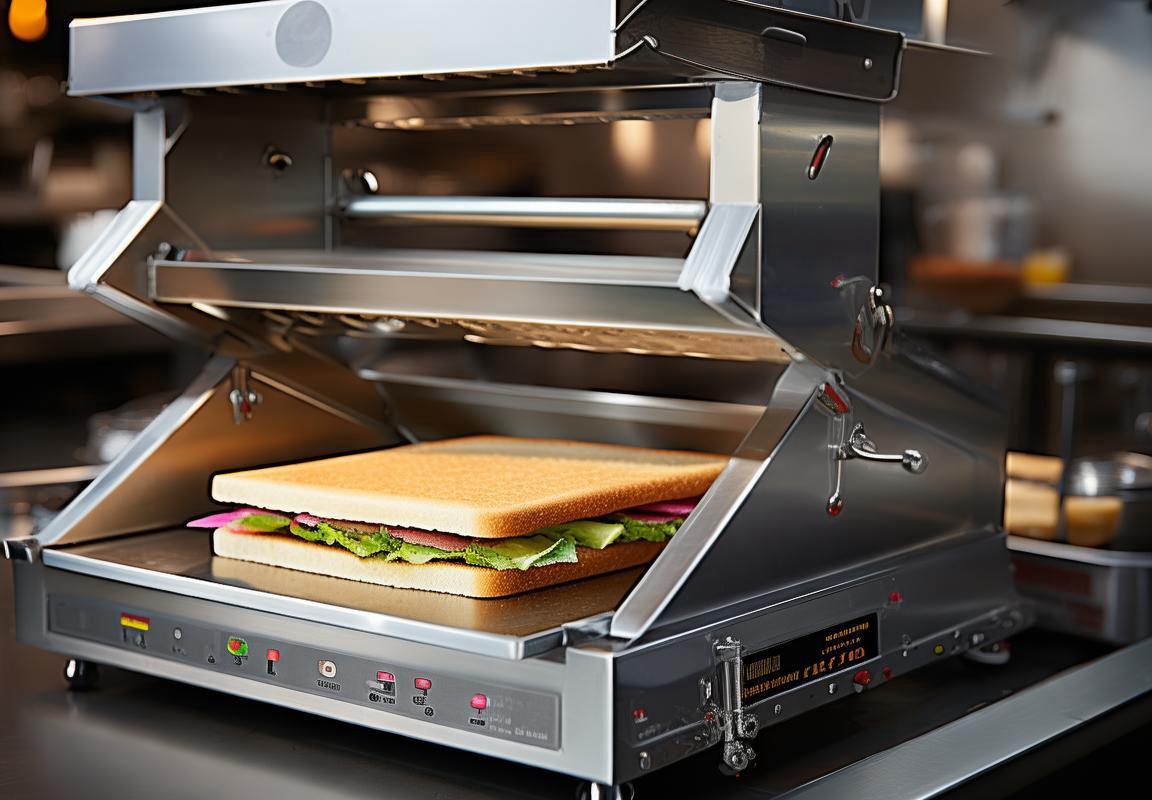
The European and American Market Dynamics
The European and American markets for commercial sandwich presses display distinct characteristics that are shaped by regional preferences, consumer demands, and technological advancements. Here’s a closer look at how these dynamics play out:
In Europe, there’s a strong emphasis on health and wellness, which has influenced the design and features of commercial sandwich presses. Consumers are increasingly seeking options that align with their lifestyle choices, leading to a preference for compact, energy-efficient appliances. This has spurred the development of sandwich presses that are not only efficient but also eco-friendly.
American consumers, on the other hand, are more focused on speed and convenience. The fast-paced lifestyle has created a demand for commercial sandwich presses that can quickly produce high-quality sandwiches. This has driven innovation in terms of heating elements, which now often include rapid heat-up features and precise temperature controls.
European sandwich presses often come with adjustable pressure settings, allowing for the perfect amount of compression to achieve the desired texture and cook-through. This is in line with the European culinary tradition, where attention to detail and presentation are paramount. American presses, while also offering adjustable pressure, tend to focus more on simplicity and ease of use, appealing to the quick-service restaurant (QSR) market.
The European market is also seeing a surge in the popularity of multi-functional presses that can be used for a variety of tasks, from making sandwiches to grilling vegetables or cooking eggs. This versatility is attractive to European chefs who are always looking for ways to expand their menu options. American presses, while not necessarily multi-functional, are often designed with a specific niche in mind, such as the classic 4-section press for making traditional deli-style sandwiches.
In terms of materials, European presses are often crafted with stainless steel, which is not only durable but also fits well with the industrial aesthetic of modern kitchens. American presses, while also made of stainless steel, might include additional features like non-stick coatings to ensure that the sandwiches release easily and maintain their shape.
Energy efficiency is a growing concern across both continents, but it’s particularly pronounced in Europe, where the push for sustainability is stronger. European sandwich presses are designed with energy-saving technologies in mind, such as timers and auto-shutoff features that prevent unnecessary energy use.
Another difference lies in the size of the sandwich presses. European models often come in smaller sizes that are well-suited for smaller kitchens or as part of a modular system. American models, however, tend to be larger and more robust, catering to the demand for high-volume production in larger establishments.
When it comes to branding and marketing, European sandwich presses are often associated with luxury and quality, with manufacturers emphasizing the craftsmanship and precision of their products. American brands, while not necessarily discounting quality, might place more emphasis on value and innovation, offering a range of features that cater to different segments of the market.
Service and support are also key factors in both markets. European consumers expect comprehensive after-sales service, including maintenance and repair services, while American consumers look for straightforward customer service and warranty options.
Ultimately, the European and American market dynamics for commercial sandwich presses reflect the diverse needs and expectations of consumers on each continent. The continuous innovation and adaptation of these appliances to meet these demands highlight the dynamic nature of the industry and its potential for further growth.
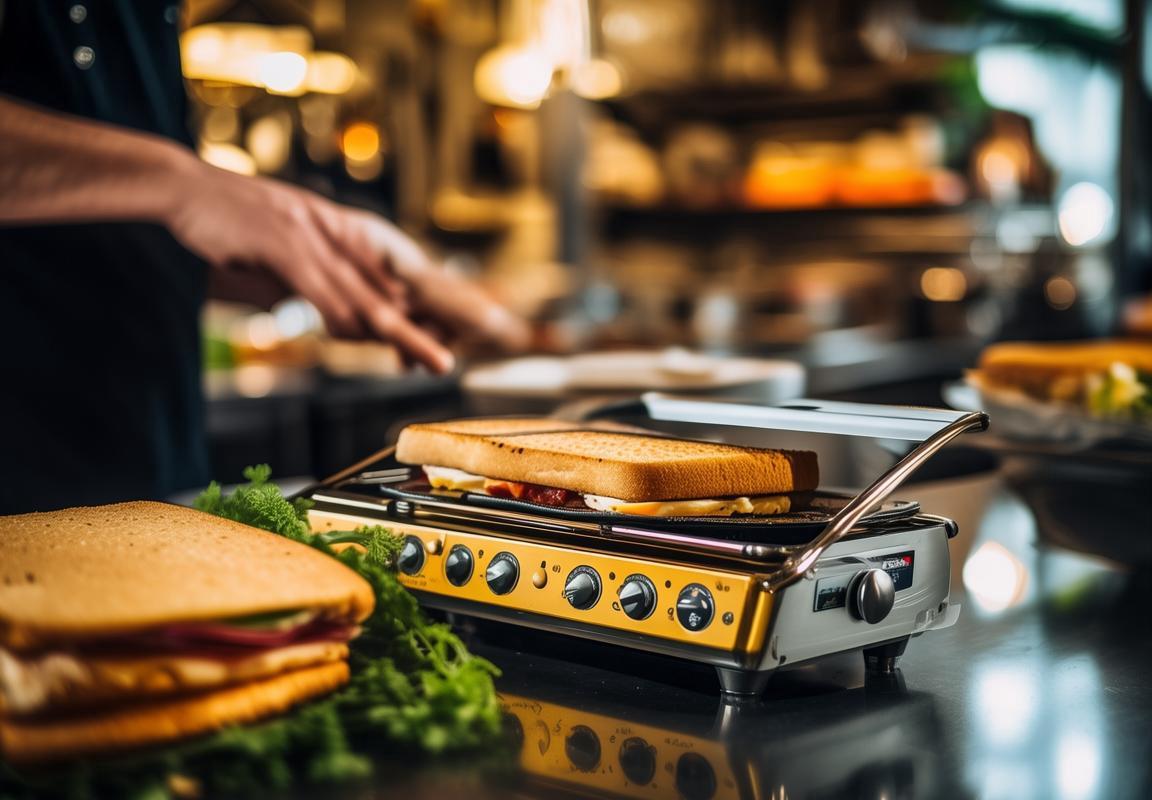
Consumer Benefits and Market Trends
The integration of NSF approved commercial sandwich presses has brought about a wave of benefits for consumers and significant shifts in market trends. These advancements not only enhance the culinary experience but also reflect the evolving demands of the modern food service industry.
The convenience factor in the fast-paced lifestyle has become a pivotal driver in the market. With busy schedules, consumers are seeking quick and efficient meal options, and sandwich presses offer just that. The compact design and ease of use make these appliances a staple in many homes and offices, leading to a surge in demand.
Health consciousness is on the rise, and consumers are increasingly opting for fresh and homemade meals over processed foods. NSF approved sandwich presses ensure that the food being served is not only delicious but also meets stringent health and safety standards. This focus on quality and hygiene has turned sandwich presses into a symbol of trust among consumers.
Customization has become a buzzword in the food industry, and sandwich presses play a significant role in this trend. They allow users to create their own unique combinations of ingredients, catering to diverse tastes and dietary preferences. This flexibility has opened up new possibilities for consumers who seek a personalized dining experience.
Sustainability is a growing concern, and the market for sandwich presses is responding by offering eco-friendly options. Energy-efficient models and those made from recyclable materials are becoming more popular, as consumers look for products that align with their environmental values.
The convenience of on-the-go eating is another key market trend. With the rise of grab-and-go culture, sandwich presses are being used not just in restaurants and cafes but also in portable, compact versions that cater to busy professionals and students. This trend is driving innovation in the design and functionality of sandwich presses.
Innovation in technology is also shaping market trends. Smart sandwich presses that can be controlled via smartphone apps are gaining traction. These devices not only offer convenience but also allow for precise temperature control and recipe customization, which is a big draw for tech-savvy consumers.
The rise of the health and wellness sector has had a profound impact on the market. Consumers are seeking balanced meals that are high in protein and low in fat, and sandwich presses can easily accommodate these requirements. The versatility of these appliances in preparing a wide range of healthy sandwiches has made them a favorite among the health-conscious.
The market is also witnessing a trend towards artisanal and gourmet sandwiches. Consumers are willing to pay a premium for high-quality, artisanal products, and sandwich presses are enabling chefs and entrepreneurs to craft these premium offerings. This has led to a growth in niche markets and specialty sandwich shops.
The convenience of meal prep has become a significant benefit for consumers. With sandwich presses, individuals can prepare their meals in advance, store them, and simply reheat them when needed. This is particularly appealing for those with busy lifestyles or those looking to save time during the weekdays.
Lastly, the market trend of convenience extends to the ease of maintenance and cleaning. Consumers are looking for appliances that are not only user-friendly but also low-maintenance. NSF approved commercial sandwich presses are designed with this in mind, featuring easy-to-clean surfaces and components that contribute to a hassle-free experience.
In conclusion, the consumer benefits of NSF approved commercial sandwich presses are multifaceted, from convenience and health to customization and sustainability. These benefits, coupled with the evolving market trends, are shaping the future of the sandwich press industry and influencing consumer behavior in the food service sector.
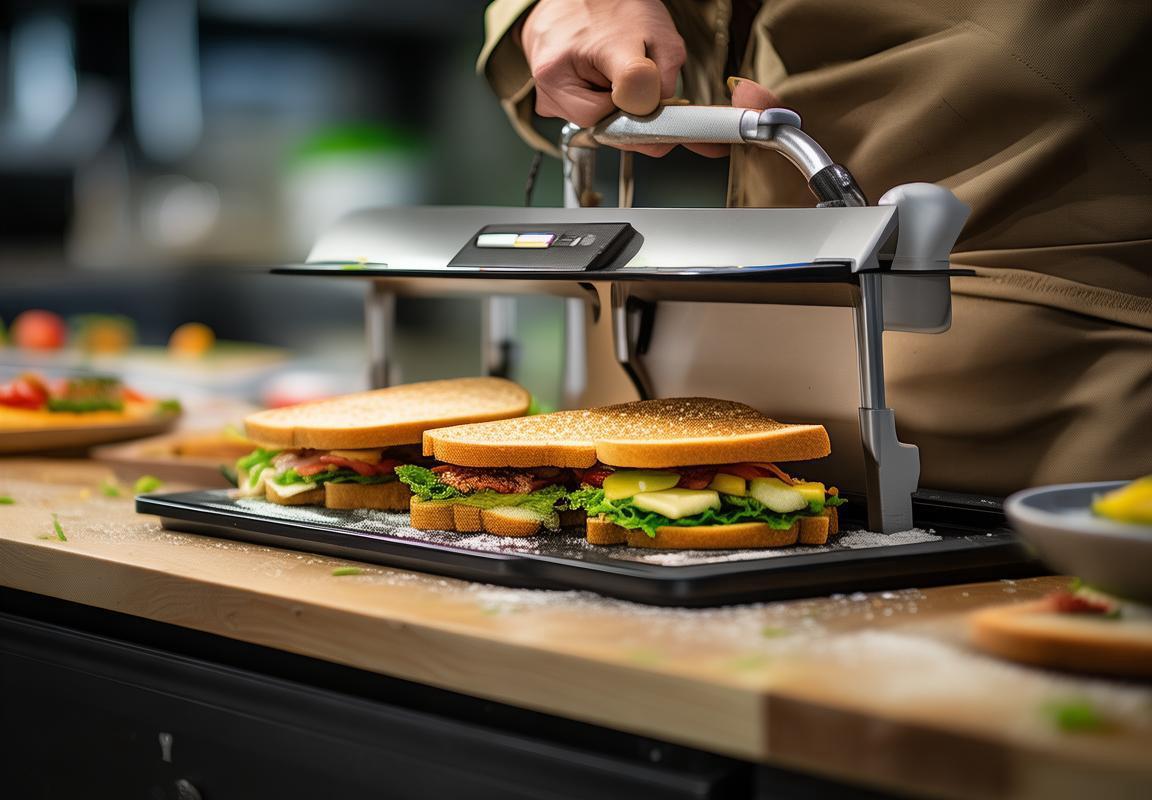
Case Studies: Successful Implementations in the Industry
In the bustling world of commercial foodservice, the adoption of advanced kitchen equipment has become a game-changer. Case studies highlighting successful implementations of innovative kitchen solutions like NSF-approved sandwich presses can offer valuable insights into how these technologies are reshaping the industry. Let’s delve into a few such success stories.
A local café in San Francisco, known for its artisanal sandwiches, found a new level of consistency with the introduction of an NSF-certified sandwich press. The café owner noticed a significant increase in customer satisfaction as the even heat distribution and precise timing of the press ensured that every sandwich was cooked to perfection, maintaining the integrity of the fillings and the quality of the bread.
In a busy sports bar in New York, the management was facing a challenge of quick service without compromising on taste. By investing in an NSF-approved commercial sandwich press, they were able to streamline their operation. The press’s rapid heat-up time and non-stick surfaces meant that the kitchen staff could cook sandwiches faster, reducing wait times and keeping customers happy.
A mid-sized restaurant in Chicago had been struggling with the inconsistency of their sandwich output. The introduction of an NSF-certified commercial sandwich press solved this issue. The precise temperature control and the press’s ability to cook both sides evenly led to a consistent product that received accolades from both patrons and critics alike.
A gourmet food truck in Los Angeles, known for its gourmet sandwiches, was on the lookout for a way to maintain quality while increasing their service speed. After researching various options, they chose an NSF-approved sandwich press. The press’s durability and the ease of cleaning were crucial factors, as the food truck had to be operational throughout the day, with limited downtime.
In a trendy café in Denver, the owner was looking to elevate their menu offerings. By incorporating an NSF-certified commercial sandwich press into their kitchen, they were able to introduce new, gourmet sandwich options that quickly became a hit. The press’s versatility allowed them to experiment with different types of bread and fillings, broadening their menu and attracting a wider customer base.
A university cafeteria in Boston was in need of a solution to cater to the diverse tastes of their student population. An NSF-approved sandwich press was introduced to their kitchen, providing a quick and hygienic way to serve a variety of sandwiches. The press’s ability to cook a sandwich in minutes, without the need for additional ovens or grills, was a significant time-saver for the busy cafeteria staff.
In a coastal town in Maine, a popular seafood restaurant added an NSF-certified sandwich press to their kitchen to complement their traditional lobster rolls. The press allowed them to offer a quick, yet satisfying, alternative for customers seeking a seafood-inspired meal. The consistency of the sandwiches, paired with the restaurant’s fresh, local seafood, was a winning combination that boosted sales.
A corporate cafeteria in Dallas was looking to enhance the dining experience for their employees. The implementation of an NSF-certified commercial sandwich press resulted in a more diverse menu, including a variety of sandwiches that were both healthy and delicious. The press’s ability to cook a sandwich without adding excessive fat was a hit, especially among health-conscious workers.
Each of these case studies demonstrates how NSF-approved commercial sandwich presses have been successfully integrated into various commercial kitchens across the United States and Europe. From local cafes to university cafeterias, these presses have proven to be a valuable asset, enhancing the quality of food service and improving customer satisfaction.
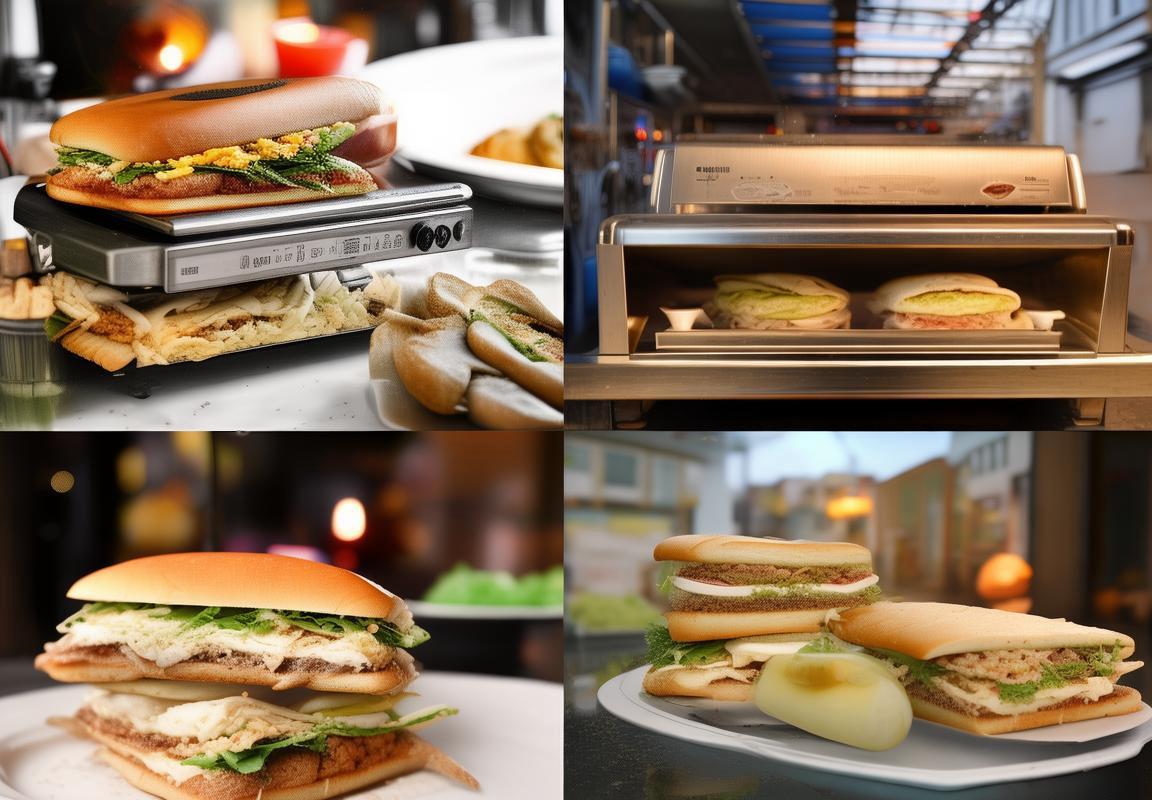
Future Outlook and Predictions
In the realm of commercial kitchen appliances, the sandwich press has emerged as a versatile and indispensable tool. Its evolution from a simple appliance to a sophisticated piece of equipment has been marked by technological advancements and changing consumer demands. Let’s delve into some of the notable case studies that showcase the successful integration of NSF approved commercial sandwich presses in various industries.
-
Revolutionizing Fast Food OutletsOne fast-food chain experienced a significant boost in efficiency and customer satisfaction after installing NSF certified sandwich presses. The uniformity in the quality of their sandwiches, coupled with the speed of service, resulted in increased sales and a loyal customer base.
-
Innovating Gourmet CafesA gourmet café that specializes in artisanal sandwiches faced a challenge in maintaining consistent quality across their menu items. By adopting an NSF approved sandwich press, they were able to achieve even heat distribution, ensuring that each sandwich was cooked to perfection without the risk of burning.
-
Streamlining School Lunch ProgramsSchool districts across the country have turned to NSF approved commercial sandwich presses to streamline their lunch programs. These presses not only save time in preparing large quantities of sandwiches but also promote healthier eating habits among students by offering a variety of nutritious options.
-
Enhancing Catering ServicesA catering company found that their ability to serve high-quality sandwiches at events was limited by the inconsistency of traditional cooking methods. The introduction of NSF certified sandwich presses allowed them to offer a variety of sandwiches with precise temperatures and textures, leading to repeat business and positive word-of-mouth referrals.
-
Boosting Efficiency in Large-Scale ProductionIn the food manufacturing sector, a company specializing in pre-packaged sandwiches faced production challenges. The implementation of NSF approved sandwich presses improved the consistency and speed of their production line, allowing them to meet increasing market demands without compromising on quality.
-
Customization and PersonalizationA café that prides itself on customization and personalization found that the NSF approved sandwich presses were the perfect solution for their needs. The ability to cook a wide range of breads and fillings to order, ensuring each customer’s preferences were met, significantly enhanced their service.
-
Reducing Energy Consumption and WasteAn eco-conscious restaurant replaced their old sandwich presses with NSF certified models that were more energy-efficient. This upgrade not only helped them reduce their carbon footprint but also resulted in lower utility bills and less waste, aligning with their sustainable practices.
-
Sustainability and HygieneA health-conscious food service provider focused on sustainability and hygiene adopted NSF approved sandwich presses that were designed with these principles in mind. The non-stick surfaces and easy-to-clean designs not only ensured the quality of the food but also contributed to a cleaner and more sustainable kitchen environment.
In the ever-evolving landscape of the food service industry, these case studies highlight the transformative impact of NSF approved commercial sandwich presses. As the demand for high-quality, consistent, and efficient food service continues to grow, these appliances are poised to play an even more significant role in the industry’s future.
Predictions for the future of sandwich presses include:
-
Technological Integration: Expect to see even more advanced features such as digital temperature control and automated cooking times, enhancing the precision and consistency of sandwich preparation.
-
Sustainability Focus: With environmental concerns at the forefront, sandwich presses that are energy-efficient and made from sustainable materials will become more popular.
-
Health and Safety: As food safety remains a top priority, sandwich presses that meet the highest hygiene standards and are easy to maintain will be sought after.
-
Customization: The ability to customize the cooking process to meet specific dietary needs, such as gluten-free or low-carb options, will be a key selling point for sandwich presses.
-
Market Expansion: The success of sandwich presses in various industries suggests a potential for expansion into new markets, such as healthcare facilities and corporate dining services.
In conclusion, the success stories shared here demonstrate the versatility and effectiveness of NSF approved commercial sandwich presses. As the industry continues to evolve, these appliances are likely to become even more integral to the seamless operation of food service establishments worldwide.
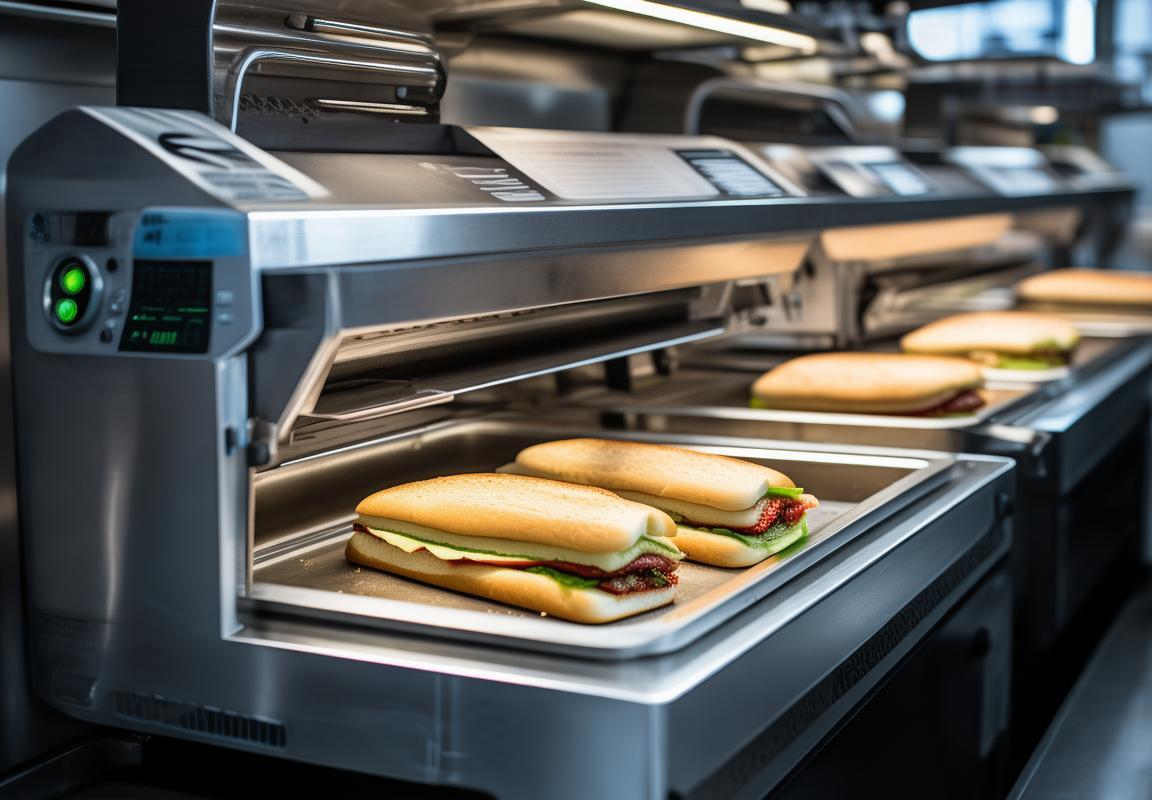
Final Thoughts
In reflecting on the journey of commercial sandwich presses, one can’t help but appreciate the evolution and innovation that has shaped this niche within the culinary industry. The rise of these presses has not only transformed the way sandwiches are prepared but has also brought about a wave of efficiency and quality in foodservice operations. Here are some final thoughts to ponder:
The integration of technology into sandwich presses has been a game-changer. From the early days of simple, manual models to the sophisticated, programmable units we see today, the level of precision and consistency they offer is remarkable. This technological advancement has not only made it easier for chefs to craft perfect sandwiches but has also opened doors for new and creative menu items.
The market has seen a shift towards sustainability, and commercial sandwich presses are no exception. Eco-friendly materials, energy-efficient designs, and a focus on reducing waste have become increasingly important. Companies that prioritize these aspects are likely to attract environmentally conscious consumers and gain a competitive edge.
Innovation in design has led to presses that are not only functional but also visually appealing. The sleek, modern aesthetics of these machines have made them a centerpiece in many commercial kitchens, enhancing the overall look and feel of the space. This design evolution reflects a broader trend in the industry where aesthetics and functionality go hand in hand.
The rise of health-conscious consumers has also played a significant role in the popularity of sandwich presses. As people seek out healthier eating options, the ability to customize sandwiches with fresh ingredients and healthier cooking methods has become a valuable feature. This trend is likely to continue, pushing manufacturers to develop even more health-forward solutions.
The rise of mobile foodservice and food trucks has also impacted the sandwich press market. These portable units have made it possible for entrepreneurs to serve high-quality sandwiches on the go, reaching a wider audience. The convenience and adaptability of these presses have been crucial in this sector’s growth.
The importance of consistency cannot be overstated. In the fast-paced world of foodservice, customers expect a consistent experience every time they visit a restaurant or café. Sandwich presses have played a pivotal role in achieving this consistency, ensuring that every sandwich is cooked to perfection, regardless of the time of day or the number of orders.
The industry has also seen a rise in niche markets, with specialty sandwiches becoming increasingly popular. From gourmet burgers to artisanal paninis, the variety of sandwiches being produced is vast. This diversity has required sandwich presses to be versatile, capable of handling different types of bread and cooking techniques.
In terms of the future, there is a strong potential for further innovation. The Internet of Things (IoT) could revolutionize the way sandwich presses are used, with real-time data analytics and predictive maintenance becoming standard features. This would not only improve efficiency but also reduce downtime and maintenance costs.
The rise of social media has also had a significant impact on the sandwich press market. With the ability to showcase their creations to a global audience, chefs and foodservice operators are more motivated than ever to push the boundaries of what’s possible with these machines. This has led to a surge in creative and unique sandwich offerings.
In conclusion, the journey of the commercial sandwich press is a testament to the power of innovation and consumer demand. As the industry continues to evolve, it’s clear that these presses will play a crucial role in shaping the future of foodservice. Whether it’s through technological advancements, design improvements, or the introduction of new features, the sandwich press is poised to remain a key player in the culinary landscape.